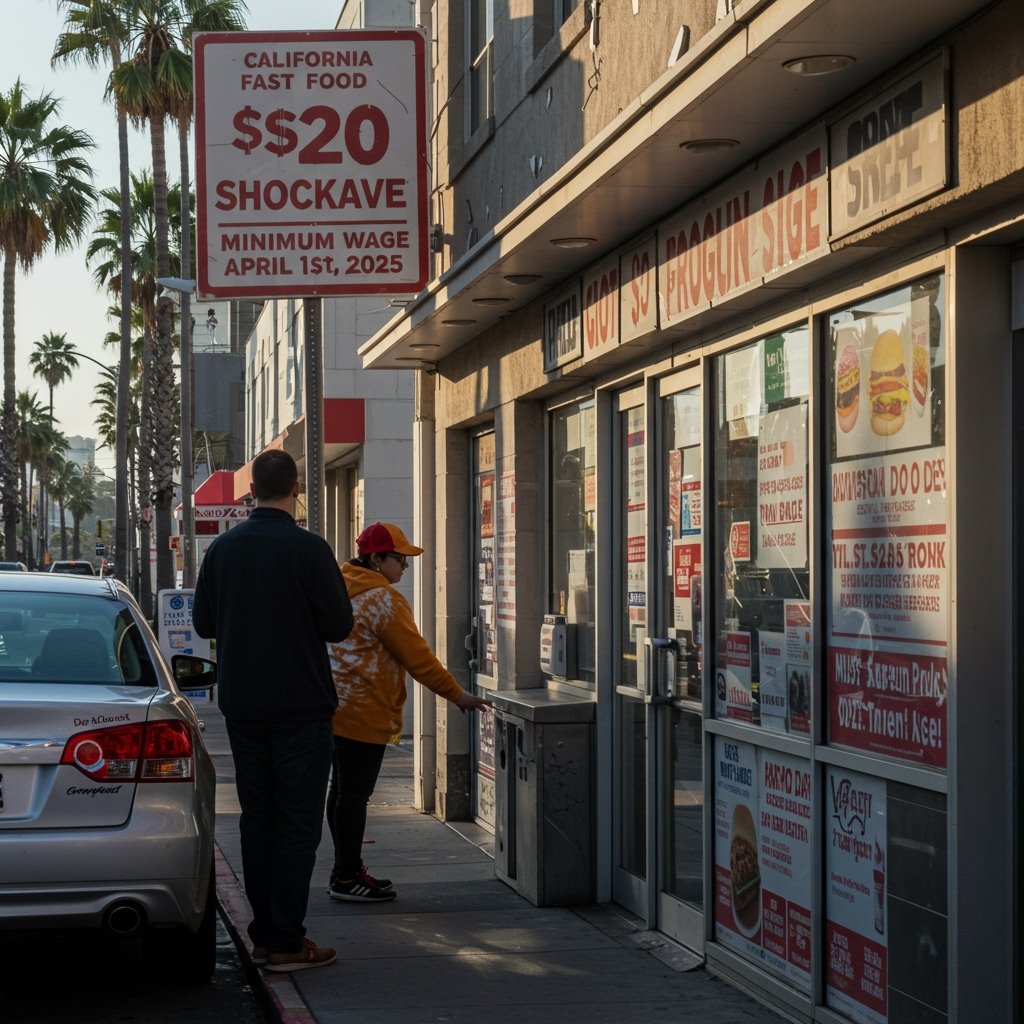California Fast Food Sector Prepares for Major Wage Increase
SACRAMENTO, CA – California’s extensive fast-food industry is bracing for a significant financial shift as a new state law mandating a substantial increase in the minimum wage for fast-food workers is set to take effect on April 1, 2025. This legislative change, which was signed into law last year, specifically targets fast-food chains operating with 60 or more locations nationally, elevating the minimum hourly wage for their employees from the current statewide minimum of $16 to a mandated $20.
The impending implementation date marks a pivotal moment for thousands of restaurants and hundreds of thousands of employees across the Golden State. Proponents hail the wage hike as a necessary measure to provide workers with a more livable income in a state known for its high cost of living. Labor advocates have widely lauded the legislation, describing it as a crucial step towards achieving fair pay and improving the economic security of a workforce often characterized by low wages and limited benefits.
Economic Fallout and Industry Concerns
However, the significant increase has triggered considerable alarm and concern within the restaurant industry. Business owners and operators are grappling with how to absorb the projected rise in labor costs, which for many fast-food establishments represents a substantial portion of their overall operating expenses. Industry analysts are anticipating that the mandated wage increase will necessitate difficult decisions for businesses.
Common predictions from these analysts include widespread efforts by restaurants to offset the higher labor expenses through a combination of strategies. Foremost among these is the expectation that many establishments will be forced to raise prices for consumers. Estimates for these price adjustments range from 5% to as high as 10%, potentially impacting consumer affordability and demand. Such price increases, while necessary for business survival according to some, could alienate price-sensitive customers who frequent fast-food establishments specifically for their affordability.
Beyond price hikes, analysts also predict potential staff reductions as businesses look to streamline operations and reduce their overall labor footprint. This could manifest in fewer hires, reduced employee hours, or, in some cases, layoffs. The potential for job losses or reduced earning opportunities through fewer hours presents a contradictory outcome to the wage increase’s stated goal of improving worker well-being.
The California Restaurant Association (CRA) has been vocal in expressing its concerns regarding the new law. The organization has consistently highlighted worries about the speed and scale of the increase, arguing that a jump from $16 to $20 per hour represents a rapid and potentially unsustainable shock to the system for many businesses. The CRA contends that this steep increase in a relatively short timeframe does not provide businesses with adequate time to adapt their operating models, find efficiencies, or adjust their financial structures without resorting to measures like significant price increases or workforce changes.
The Law’s Scope and Rationale
The legislation, formally known as AB 1228, creates a new Fast Food Council comprising representatives from labor and the industry. This council is empowered to recommend future wage increases annually, capped at either 3.5% or the percentage change in the Consumer Price Index for Urban Wage Earners and Clerical Workers (CPI-W), whichever is lower. While the initial $20 mandate takes effect on April 1, 2025, the establishment of this council signifies a long-term mechanism for wage determination within the sector.
The focus on chains with 60 or more locations nationally means that smaller, independent fast-food restaurants and other types of dining establishments are not directly subject to this initial $20 minimum wage requirement, though they are still bound by the general state minimum wage, currently $16. The rationale behind targeting larger chains often centers on the belief that these corporations have greater capacity to absorb increased labor costs compared to smaller, independent operators. Nevertheless, smaller businesses may still face indirect pressure to raise wages to compete for labor.
Looking Ahead: Uncertainty and Adaptation
As the April 1, 2025, deadline approaches, fast-food businesses across California are actively evaluating their strategies. This includes exploring options for increased automation, negotiating with suppliers, adjusting operational hours, and carefully managing staffing levels. The impact on franchisees, who often operate under strict corporate guidelines while bearing the direct burden of labor costs, is a particular area of focus.
The coming months will be critical for the industry as it navigates the transition. The ultimate effects on consumer behavior, employment levels within the sector, and the profitability of fast-food businesses in California will become clearer after the implementation date. The debate over the benefits of higher wages for workers versus the economic pressures on businesses is set to continue, making the California fast-food sector a key case study for minimum wage policy nationwide.



















